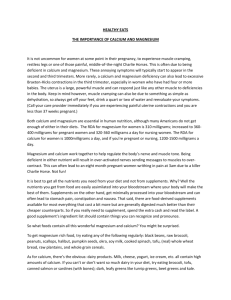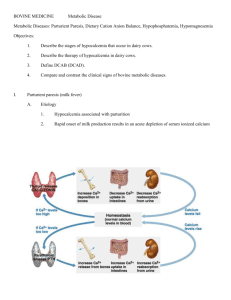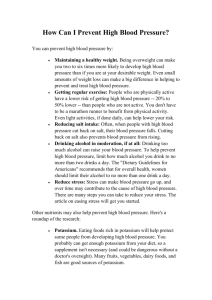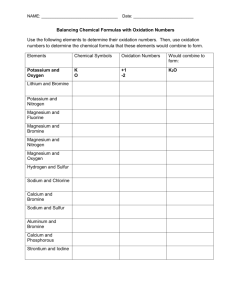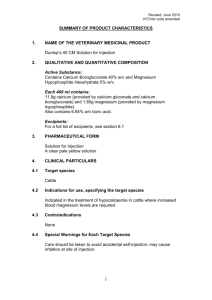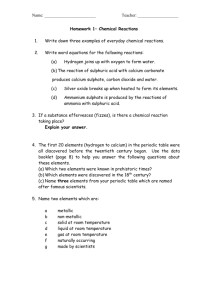Polymer Chemistry Demonstration
advertisement
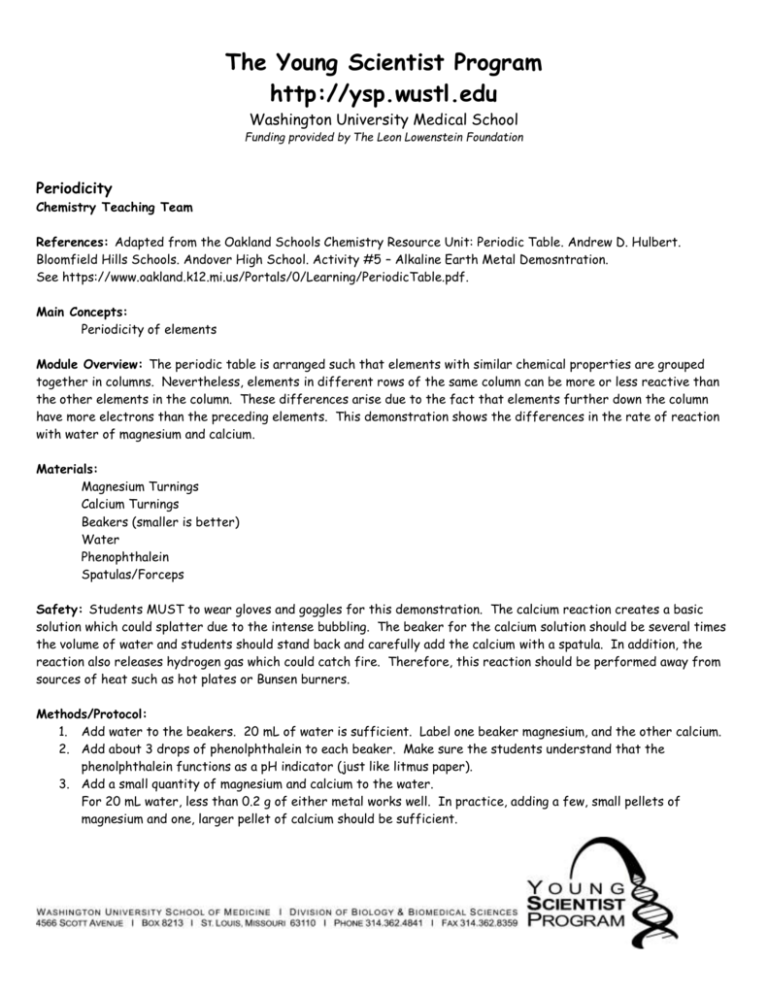
The Young Scientist Program http://ysp.wustl.edu Washington University Medical School Funding provided by The Leon Lowenstein Foundation Periodicity Chemistry Teaching Team References: Adapted from the Oakland Schools Chemistry Resource Unit: Periodic Table. Andrew D. Hulbert. Bloomfield Hills Schools. Andover High School. Activity #5 – Alkaline Earth Metal Demosntration. See https://www.oakland.k12.mi.us/Portals/0/Learning/PeriodicTable.pdf. Main Concepts: Periodicity of elements Module Overview: The periodic table is arranged such that elements with similar chemical properties are grouped together in columns. Nevertheless, elements in different rows of the same column can be more or less reactive than the other elements in the column. These differences arise due to the fact that elements further down the column have more electrons than the preceding elements. This demonstration shows the differences in the rate of reaction with water of magnesium and calcium. Materials: Magnesium Turnings Calcium Turnings Beakers (smaller is better) Water Phenophthalein Spatulas/Forceps Safety: Students MUST to wear gloves and goggles for this demonstration. The calcium reaction creates a basic solution which could splatter due to the intense bubbling. The beaker for the calcium solution should be several times the volume of water and students should stand back and carefully add the calcium with a spatula. In addition, the reaction also releases hydrogen gas which could catch fire. Therefore, this reaction should be performed away from sources of heat such as hot plates or Bunsen burners. Methods/Protocol: 1. Add water to the beakers. 20 mL of water is sufficient. Label one beaker magnesium, and the other calcium. 2. Add about 3 drops of phenolphthalein to each beaker. Make sure the students understand that the phenolphthalein functions as a pH indicator (just like litmus paper). 3. Add a small quantity of magnesium and calcium to the water. For 20 mL water, less than 0.2 g of either metal works well. In practice, adding a few, small pellets of magnesium and one, larger pellet of calcium should be sufficient. The Young Scientist Program http://ysp.wustl.edu Washington University Medical School Funding provided by The Leon Lowenstein Foundation 4. Observe the reactions. The magnesium reaction may not react immediately. Over time the magnesium will begin to turn the water around it pink due to the production of hydroxide ions. The calcium will react immediately and somewhat violently. The entire solution will turn pink and bubble. The calcium should react completely very quickly. Note: buildup of CaO due to reaction with the atmosphere may slow the reaction somewhat. Discussion: 1. Why does the calcium react more quickly than the magnesium? The calcium reacts more quickly because it has a lower ionization energy than the magnesium does. This means that it takes less energy input to get the calcium atoms to give up two electrons to water than it takes to do the same for magnesium atoms. The result is that the calcium reacts far more quickly than magnesium. This answer can be combined with ideas about other periodic trends such as atomic radius and electronegativity. 2. The chemical reactions are the following: Ca (s) + 2 H2O (l) Ca(OH)2 (aq) + H2 (g) Mg (s) + 2 H2O (l) Mg(OH)2 (aq) + H2 (g) Disposal and cleanup: Reseal the calcium and magnesium containers. This limits the amount of reaction with air and the buildup of oxides that will slow the reaction with water. Do not dump any unreacted magnesium or calcium down the drain. Save leftover magnesium pellets in a sandwich bag and dispose of them by allowing them to react completely or by putting them in a biohazard bin. The solutions may be poured down the drain.


